MINNEAPOLIS — William Erhardt nearly tripped over a murder.
The railroad baggage handler had been simply walking home from work at about 9 p.m. on the cold night of Dec. 3, 1894, in Minneapolis, when he of a young woman prostrate in the road He tried to give her aid, then sought lanterns and help — including the police.
ADVERTISEMENT
At first it appeared the woman dressed in dark clothes, identified as a 29-year-old dressmaker named Kitty Ging, had been thrown from a horse carriage and trampled. An accident.
But one thing disproved this theory: The autopsy found a bullet behind her right eye. She had been shot in the head. A murder.
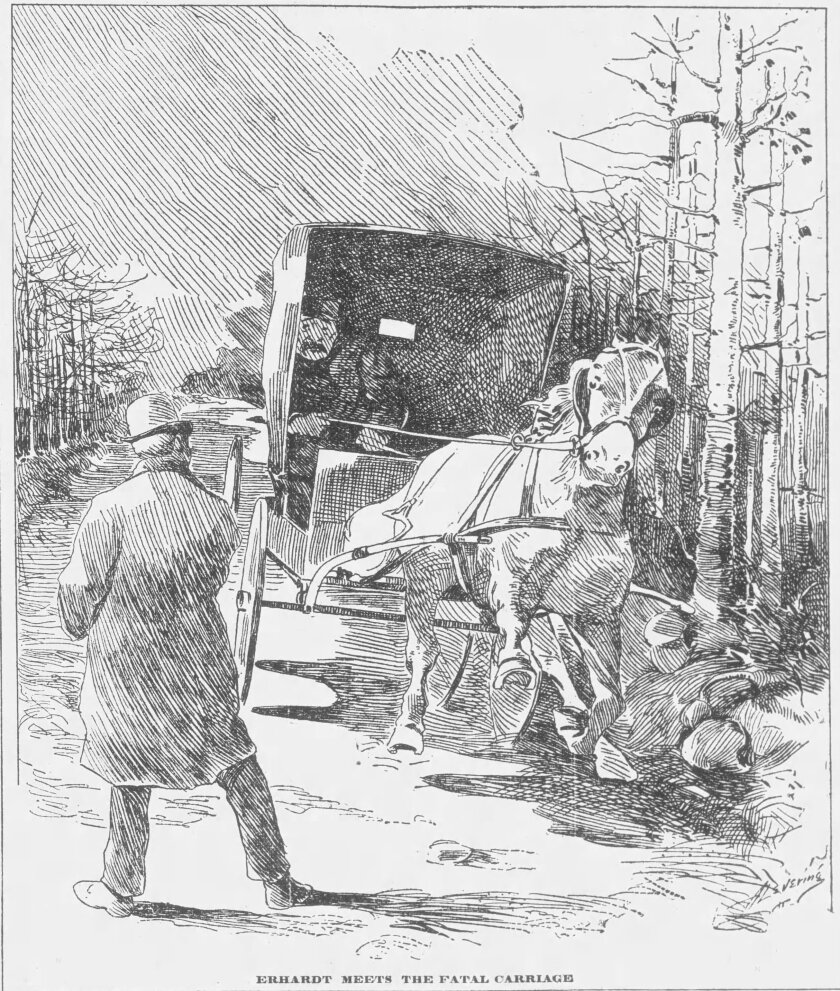
Police quickly narrowed their list of suspects down to Ging's beau, a debonair and somewhat shady man-about-town named Harry Hayward, his brother Adry, and Claus (Charley) Blixt, the burly janitor in Hayward's apartment building.
Blixt to having been the trigger man, after he was "hypotized" by Hayward.
"He fixed me with his eyes," he told police. "I couldn't say no when he looked at me that way — nobody could."
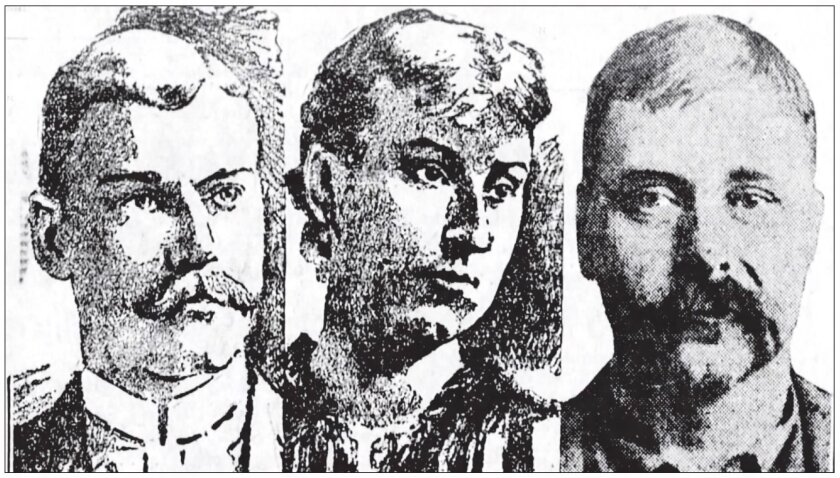
The became a local and then national sensation. Readers were riveted to the reporting about the case, requiring local newspapers to print full pages of testimony, full of illustrations and additional reporting. Hayward's death sentence for the murder would reveal Ging was the victim of what could be Minnesota's first known serial killer.
The confession and trial
According to Blixt, Hayward had practically forced him to give Ging a ride in a carriage, although he refused to join them. As Blixt drove away, Ging repeatedly asked him why Hayward hadn't accompanied them, then lapsed into silence. Blixt secretly readied a revolver Hayward had given him for the murder.
ADVERTISEMENT
When Ging leaned forward to look for Hayward, Blixt told police, he shot her in the head, just below her right ear. Then he dropped her body onto the road.
Meanwhile, Hayward made himself scarce and worked on his alibi, asking after Ging to a few people to cement in their minds that he was elsewhere during the murder.
The motive for the murder was fairly simple: money. Hayward had taken out a life insurance policy on Ging and Blixt admitted to police Hayward had said he would get a cut of it for killing the dressmaker.
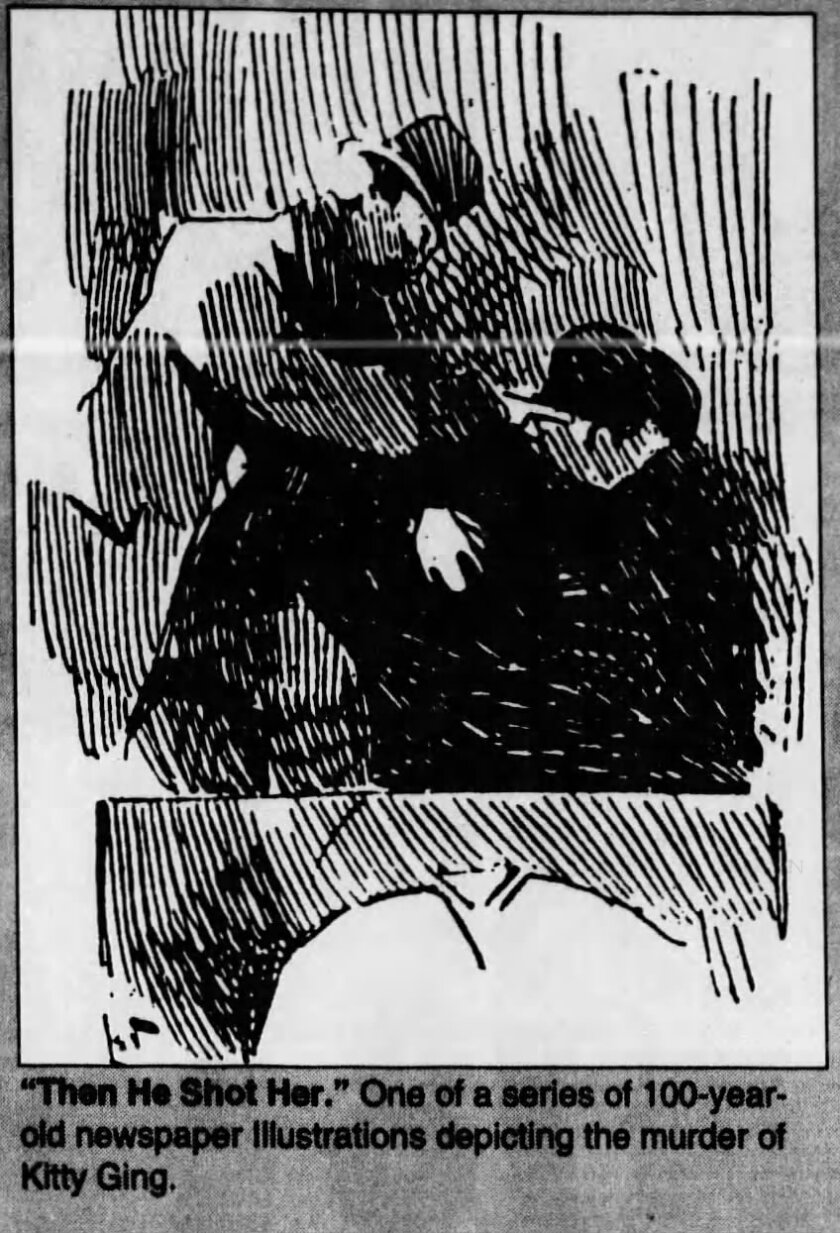
The trial stretched over 46 days and included 138 witnesses. It instantly became Minneapolis' main attraction, warranting regular full-page, front-page coverage by local newspapers, with reporting carried in newspapers nationwide.
Thousands tried to attend the trial, with many turned away, and the scene outside the courthouse was circus-like, with vendors hawking postcards showing Ging, Hayward, and the others, as well as views of the scene of the murder. On one day of the trial, three women fainted in the press of the crowded courtroom.
The among other amusements, "the buckskin mare and the buggy in which Kitty Ging rode to her death, and a striking reproduction in wax of Miss Ging herself as she looked in life," wrote the Minneapolis Journal.
The evidence against Hayward kept stacking up. The insurance policy he took out on Ging was confirmed, as were more elements of Blixt's story.
ADVERTISEMENT
Witnesses testified that Hayward, an inveterate gambler, had been borrowing increasing amounts of money from Ging to cover his tabs.
Then, shockingly, Adrey Hayward admitted that his brother had told him he wanted to kill Ging and even tried to get Adry to do the deed.
"'Adry, don't you want to make $2,000?'" Adry testified that his brother asked him. "'How?' Said I. 'By helping me get rid of Ging.'"
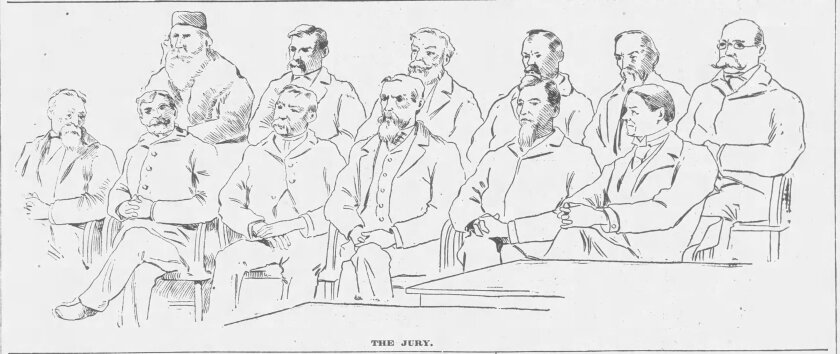
Hayward and coolly denied all allegations. And Hayward's defense team struggled to reply to the strength of the evidence arrayed against it.
In his closing statement, Hayward's lawyer tried to cast doubt on Blixt's testimony, placing the blame entirely on him and an assumed accomplice.
The jury was unmoved. It took the members less than three hours on March 8, 1895, to find Hayward
"Every eye was turned toward the condemned man," wrote the Albert Lea Times-Enterprise. "There was nothing in his face to indicate that he had heard a word of it. He threw his head back as the world 'guilty' was pronounced, but (it) was only to adjust his collar band."
ADVERTISEMENT
Three days later, he was sentenced to die.
The furor and the end
Even after the trial concluded, the public's demand to know more about everything involved seemed insatiable.
The day after Hayward was found guilty, the Minneapolis Times published a 24-page edition on March 9, 1895, labeled "The Whole Grim Story," recapping the entire trial.
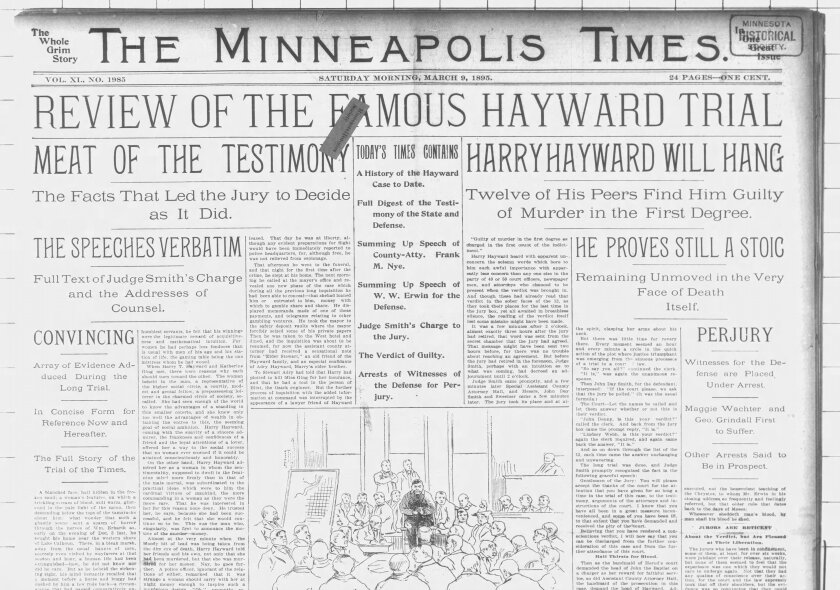
Minnesota Gov. David Marston Clough of Hayward's execution. When it became obvious his fate was sealed, Hayward confessed to plotting Ging's murder, his only regret being the he hadn't killed Blixt to keep him from admitting to the crime. He also in other states over the years.
Hayward in the Hennepin County Jail — on the future site of the Metrodome and U.S. Bank Stadium— on the afternoon of Dec. 11, 1895. He would be the second to last man to be hanged in Minnesota.
Blixt would later be sentenced to life in prison and died behind bars over three decades later.
After the Hayward trial in 1895, Joseph Vincent Brookes of Bemidji, Minnesota, had penned what is known as to the tune of a then-recent song "The Fatal Ride."
ADVERTISEMENT
The closes the tale:
He was at heart a criminal, but a coward of a man,
And so he sought another to execute his plan.
It was a cold and bloody plot, likewise a terrible sin
To take a life so kind and true as she had been to him.
Note: This reporting is based on newspaper accounts from the Albert Lea Times-Enterprise, the Duluth News Tribune, the Freeborn County Times, the Minneapolis Daily Times, the Minneapolis Star, The Minneapolis Tribune, the New Ulm Review, the St. Paul Globe, as well as details provided by the Hennepin County Museum and the Minnesota Heritage Songbook.









